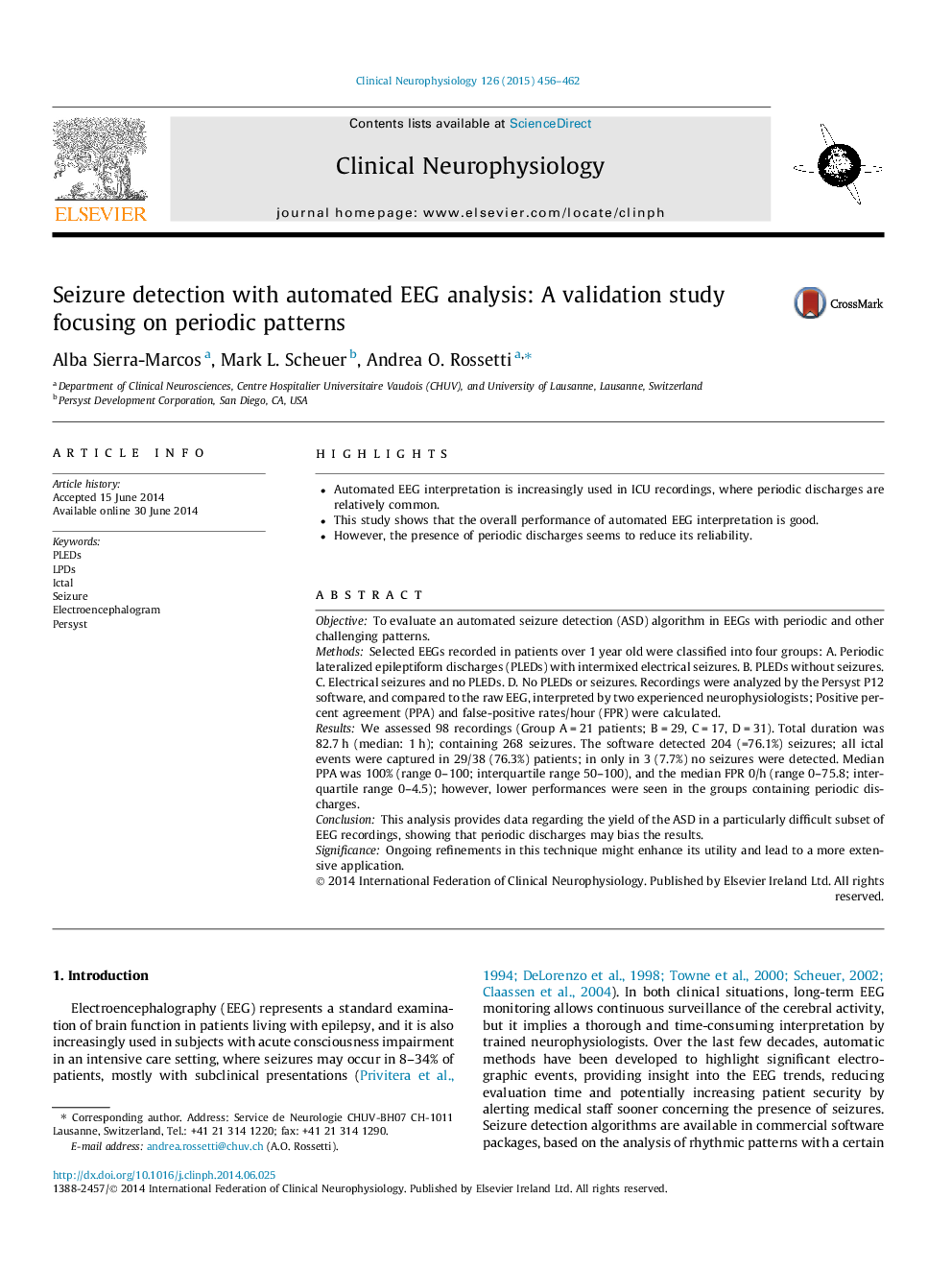| Article ID | Journal | Published Year | Pages | File Type |
|---|---|---|---|---|
| 3043704 | Clinical Neurophysiology | 2015 | 7 Pages |
•Automated EEG interpretation is increasingly used in ICU recordings, where periodic discharges are relatively common.•This study shows that the overall performance of automated EEG interpretation is good.•However, the presence of periodic discharges seems to reduce its reliability.
ObjectiveTo evaluate an automated seizure detection (ASD) algorithm in EEGs with periodic and other challenging patterns.MethodsSelected EEGs recorded in patients over 1 year old were classified into four groups: A. Periodic lateralized epileptiform discharges (PLEDs) with intermixed electrical seizures. B. PLEDs without seizures. C. Electrical seizures and no PLEDs. D. No PLEDs or seizures. Recordings were analyzed by the Persyst P12 software, and compared to the raw EEG, interpreted by two experienced neurophysiologists; Positive percent agreement (PPA) and false-positive rates/hour (FPR) were calculated.ResultsWe assessed 98 recordings (Group A = 21 patients; B = 29, C = 17, D = 31). Total duration was 82.7 h (median: 1 h); containing 268 seizures. The software detected 204 (=76.1%) seizures; all ictal events were captured in 29/38 (76.3%) patients; in only in 3 (7.7%) no seizures were detected. Median PPA was 100% (range 0–100; interquartile range 50–100), and the median FPR 0/h (range 0–75.8; interquartile range 0–4.5); however, lower performances were seen in the groups containing periodic discharges.ConclusionThis analysis provides data regarding the yield of the ASD in a particularly difficult subset of EEG recordings, showing that periodic discharges may bias the results.SignificanceOngoing refinements in this technique might enhance its utility and lead to a more extensive application.
